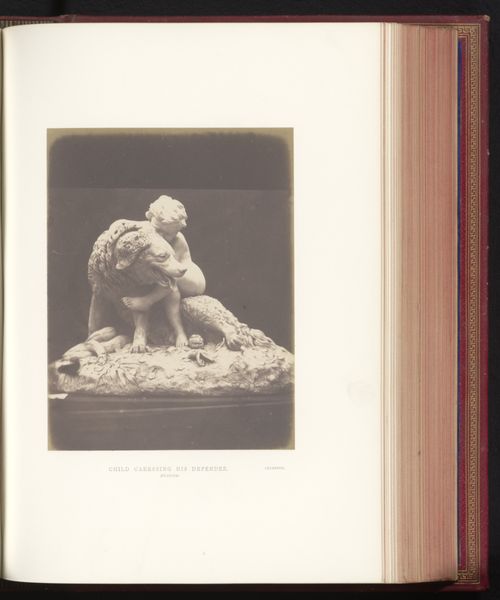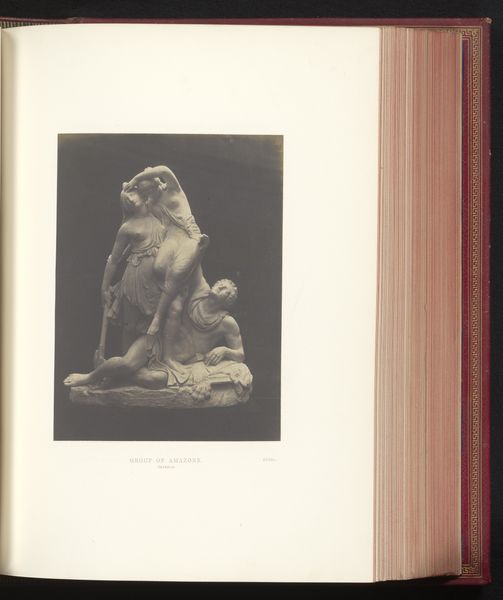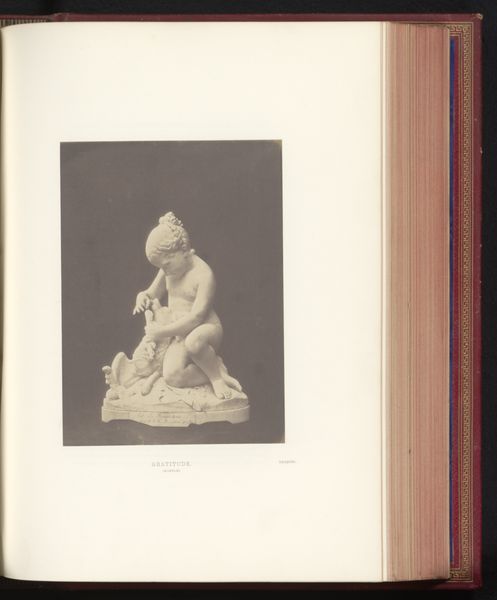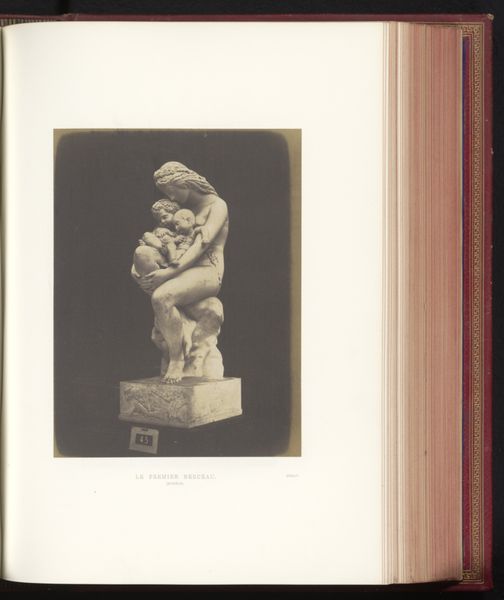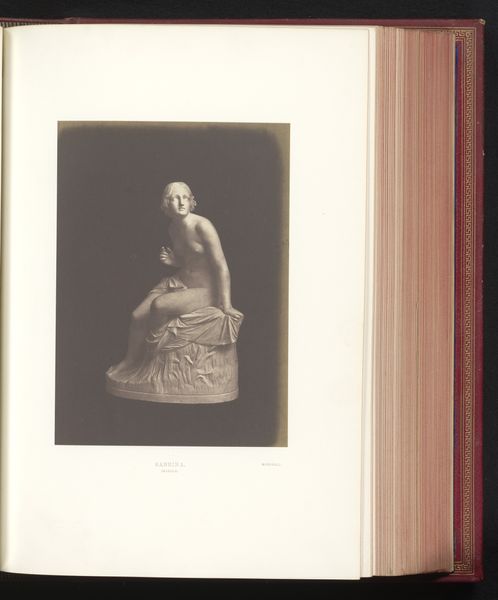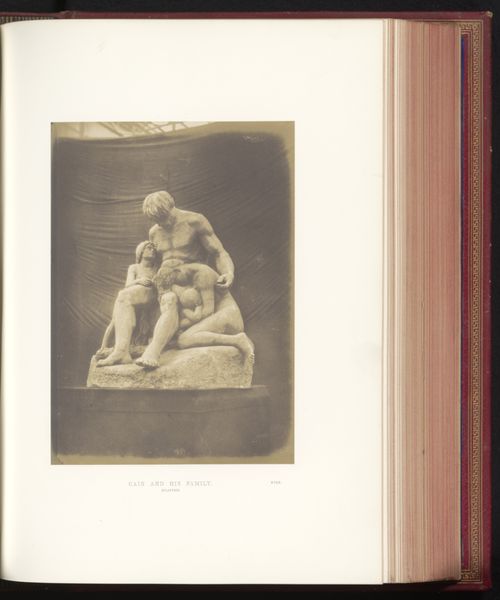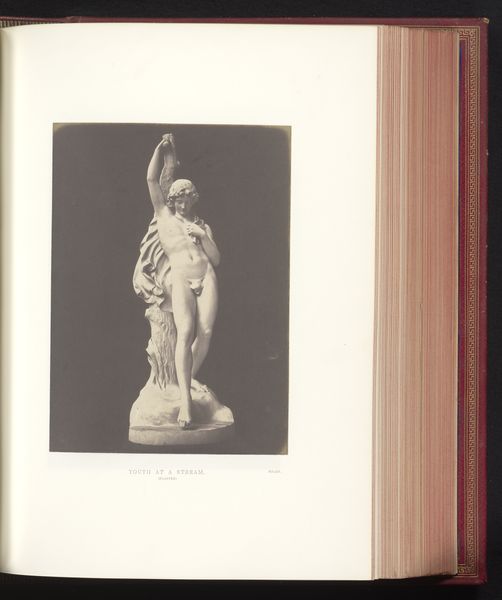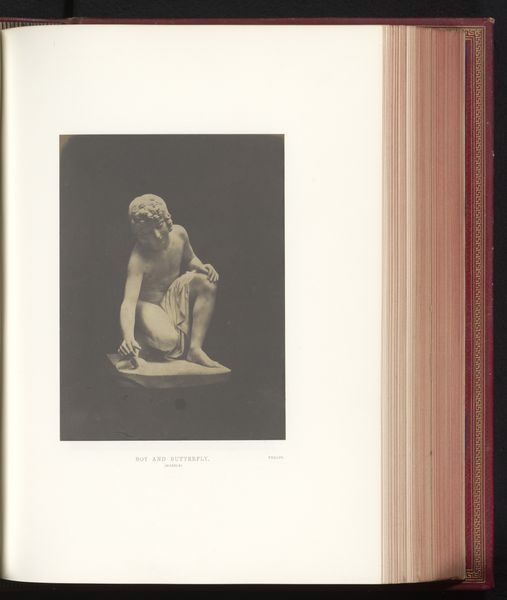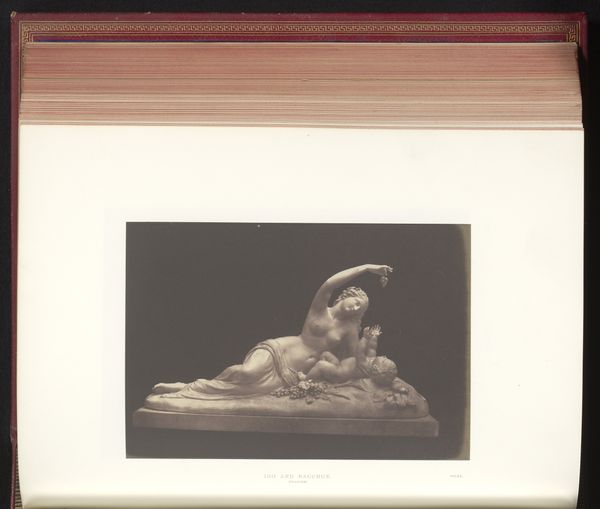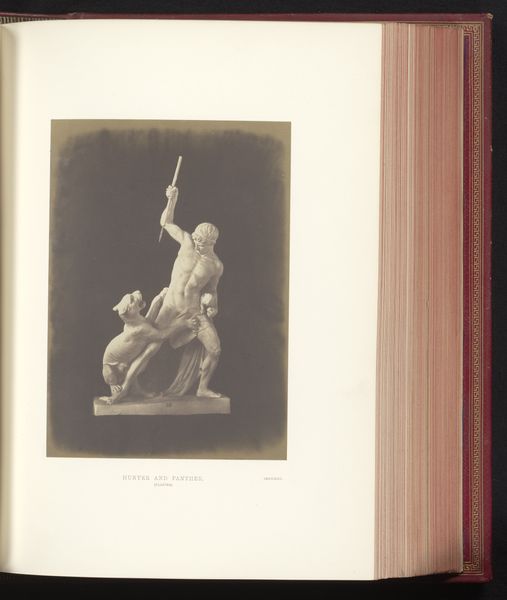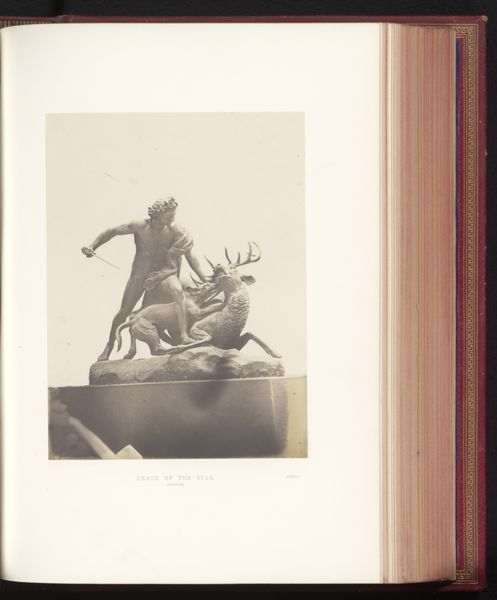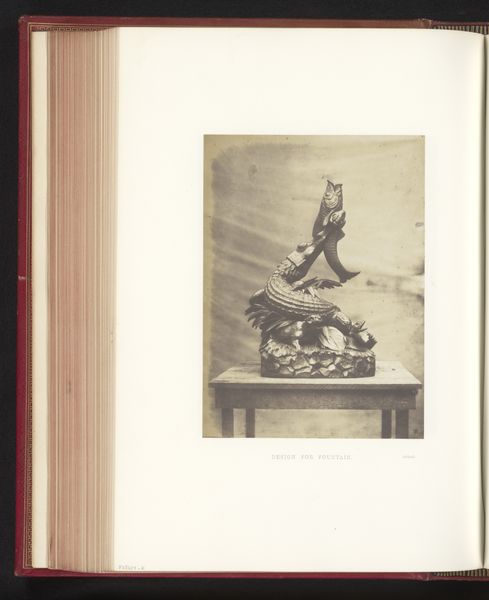
Sculptuur van een hond die een kind beschermd door Auguste Jean Baptiste Lechesne, tentoongesteld op de Great Exhibition of the Works of Industry of All Nations van 1851 in Londen 1851
0:00
0:00
Dimensions: height 200 mm, width 161 mm
Copyright: Rijks Museum: Open Domain
Curator: "Dog Protecting a Child," a bronze sculpture by Auguste Jean Baptiste Lechesne, showcased at the Great Exhibition of 1851. What do you make of it? Editor: It's quite touching. The dog seems so earnestly protective. It also makes me think about the production; bronze casting of this size must have required significant industrial labor. What can you tell me about the context of its creation? Curator: The Great Exhibition itself was a celebration of industrial production, wasn’t it? Placing Lechesne’s sculpture within that context redirects our focus. It highlights the intersection of artistic representation, the industrial capabilities of bronze casting, and the era's social values. The material—bronze—speaks volumes about technological advancements and labor practices. What choices do you think motivated the artist to depict the figures like that? Editor: I see the smooth, idealized form of the child juxtaposed against the dog’s coarser, more textured coat. Almost as though the innocence of the child had to be literally shielded by working dogs or animals. Does the chosen subject play into the broader theme of labour showcased at the exhibition, in your view? Curator: Absolutely, but also to ideals surrounding childhood. Bronze, due to its cost and the complexity of the casting process, also signaled status. We’re examining not just a sentimental scene, but a product deeply intertwined with Victorian industrial prowess, labour, and social structures. This romanticized image relies entirely on technological achievements to take shape and deliver a specific cultural message to society. Editor: It's amazing how examining the materials and their context shifts the interpretation. What was initially sentimental now carries so much more weight, about the era and the social implications of such industries. Curator: Indeed. Looking at the sculpture through a materialist lens enriches our understanding of both the artwork and the society that produced it. It brings historical production into artistic perception.
Comments
No comments
Be the first to comment and join the conversation on the ultimate creative platform.
